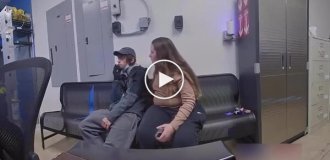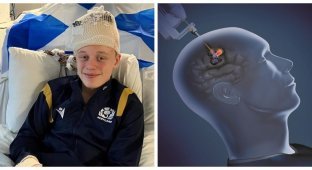A patient played the clarinet during a four-hour brain surgery (3 photos + 1 video)
A clarinetist performed brilliantly during an experiment in which doctors stimulated her brain with electrical current to alleviate symptoms of Parkinson's disease. Denise Bacon, 65, of Crowborough, England, experienced immediate improvement in her finger movement. 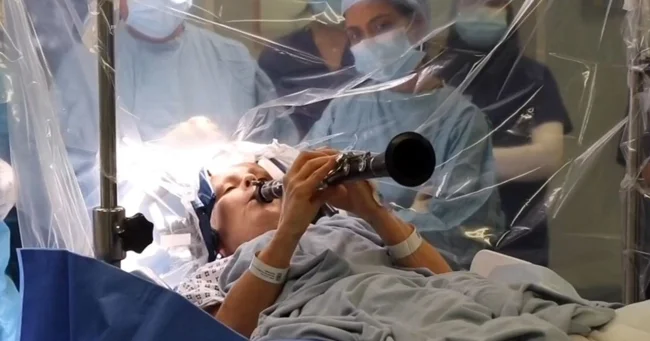
A speech therapist underwent deep brain stimulation (DBS) therapy for symptoms of Parkinson's disease. The woman was diagnosed with the disease in 2014. It affected her ability to walk, swim, dance, and play the clarinet.
Professor of Neurosurgery Keyumar Ashkan performed the surgery for four hours, and the patient remained conscious throughout.
Deep brain stimulation is a surgical procedure that involves implanting a device that delivers electrical impulses to a specific part of the brain.
The procedure produced immediate results. The pensioner's finger dexterity immediately improved, allowing her to play the clarinet with ease.
Professor Ashkan noted: "When electrodes were placed on the left side of Denise's brain, movement in her right hand improved almost immediately. The same thing happened to her left hand when we implanted electrodes in the right hemisphere." 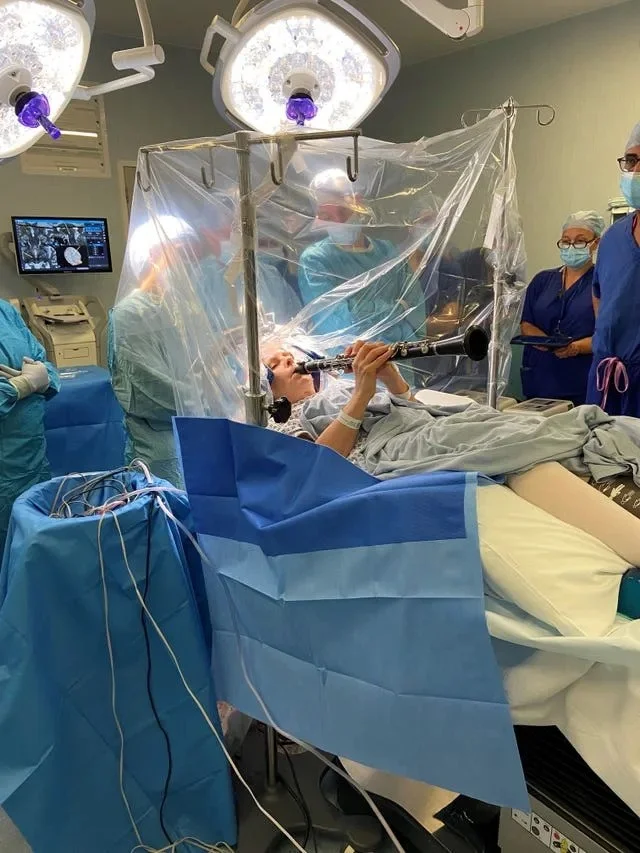
Bacon, who once played in an East Grinstead concert band, was forced to stop performing five years ago due to Parkinson's disease. Before surgery, she received local anesthesia to numb her scalp.
She said: "After the stimulation, my right hand began to move more easily, and it significantly improved my clarinet playing. I was thrilled.
I can already feel my ability to walk improving. I'm looking forward to getting back in the pool and on the dance floor."
Bacon has a battery implanted in her chest that acts as a pulse generator and can last up to 20 years without replacement.
This makes it possible to monitor brain activity and, if necessary, automatically adjust electrical stimulation. 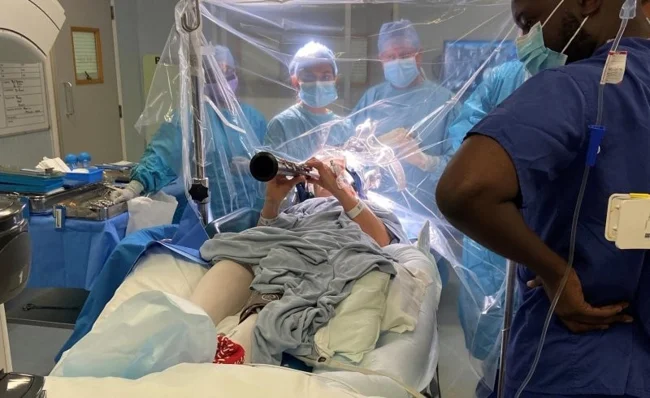
Professor Ashkan added: "Deep brain stimulation is one of the most effective, scientifically proven, and long-term treatments for Parkinson's disease. It helps control movement symptoms such as tremors, stiffness, and slowness of movement. Modern technology allows us to individualize therapy for each patient, significantly improving their quality of life."




